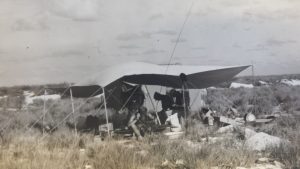This is the second post in a two-part series. Catch up on the first part here. Allegra Tennis interned with the Field Book Project and Metadata Services over the summer to investigate Smithsonian research related to countries with populations of under a million.
I came to the field of librarianship from a scientific background. The processes, details, and discoveries to be made have always held a magical quality for me. As I grew up and talked with others, I began to notice that not everyone views science in this way. Many people seem to be interested in science, whether in the idea of it, the usefulness of it, or they raw beauty of it. Yet too often people are intimidated by science, either by the research or by the researchers themselves.

In a previous blog post, I discussed how refreshing it is to see scientists embrace humor as a part of their work. I spoke of the concept in reference to the Pacific Ocean Biological Survey Program, which is the largest collection in the Smithsonian Institution Archives, and the data published continues to be used by scientists today. This amount of scientific research can sound extremely daunting to the average person, and indeed, it is too often that science has that effect.
But, as I read through the journals and field notes of these men who were off doing amazing scientific work, I realize how normal they were. They complain about real and trivial things, such as melted ice cream, the lack of their favorite cereal, or the close confines of the ship.
I can stand a man all day long, … and keep on standing him every day for six months or a year. But when I have to sleep with the guy too, and listen to him snore the same … tune every night, that’s too much.
(Excerpt from field notes, published in Droppings From the Eagle’s Roost).
In my opinion, the humanizing effect this collection has is what makes it so special. Too often science is seen reverently, as a holy, un-touchable field, which people must feel “a calling” toward. I believe that viewing scientists as normal people is a benefit, and makes the science itself easier to understand. These little snippets found in the field notes may seem trivial and distracting, but I feel that it serves the opposite purpose. They are the “spoonful of sugar that makes the medicine go down,” the small bit of humor that makes the science easier to grasp.

At the heart of it, isn’t that what the Smithsonian Institution, and most museums and libraries in general, try to do? We attempt to demystify science for our visitors, to make the information as accessible and understandable as possible to as many people as possible. This concept is a large part of the very mission of the Smithsonian, “…the increase and diffusion of knowledge….” It is not enough to make the information available, we must strive to make it feel less menacing and imposing as well. What good is it to have access to high-quality research if people are too intimidated by the topic to do anything with it?

So, is it silly and trivial, or is it providing context into the lives or the researchers? Is it a distraction from the research, or is it making it less menacing to the average person? In the end, these things do not lessen the impact of their associated scientific data. If anything, by increasing the visibility of the data, I believe these oddments have the potential to add to their impact.

Be First to Comment